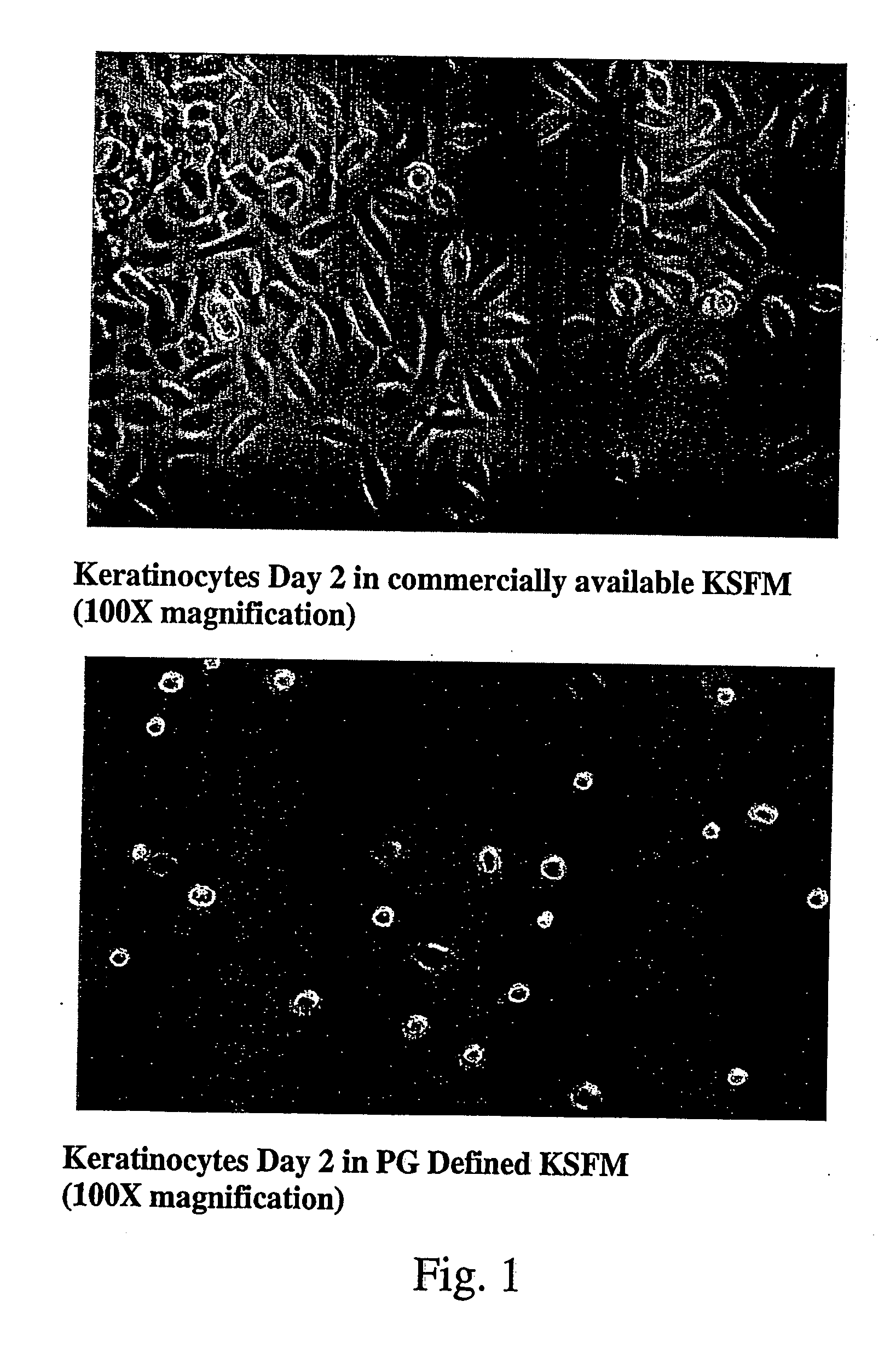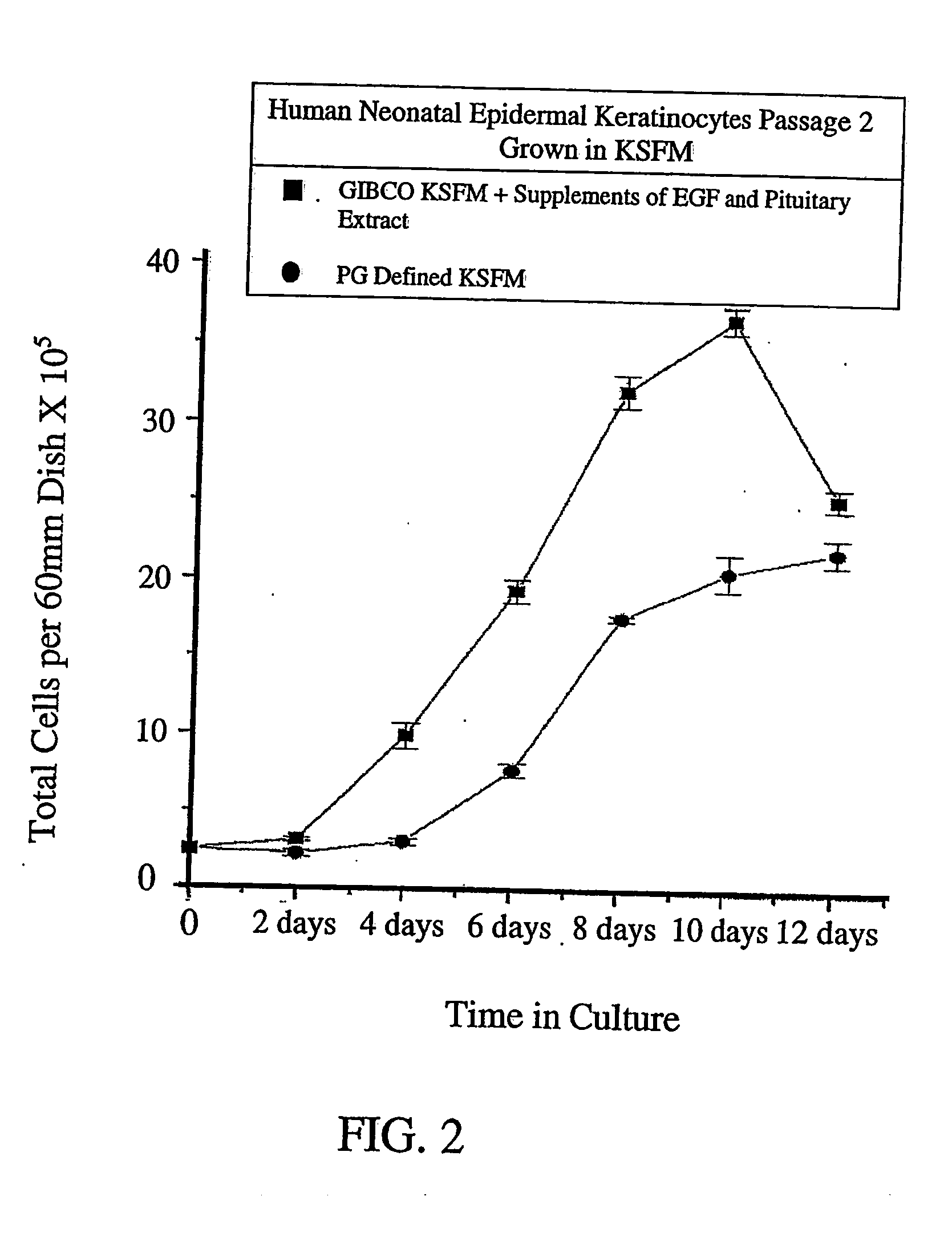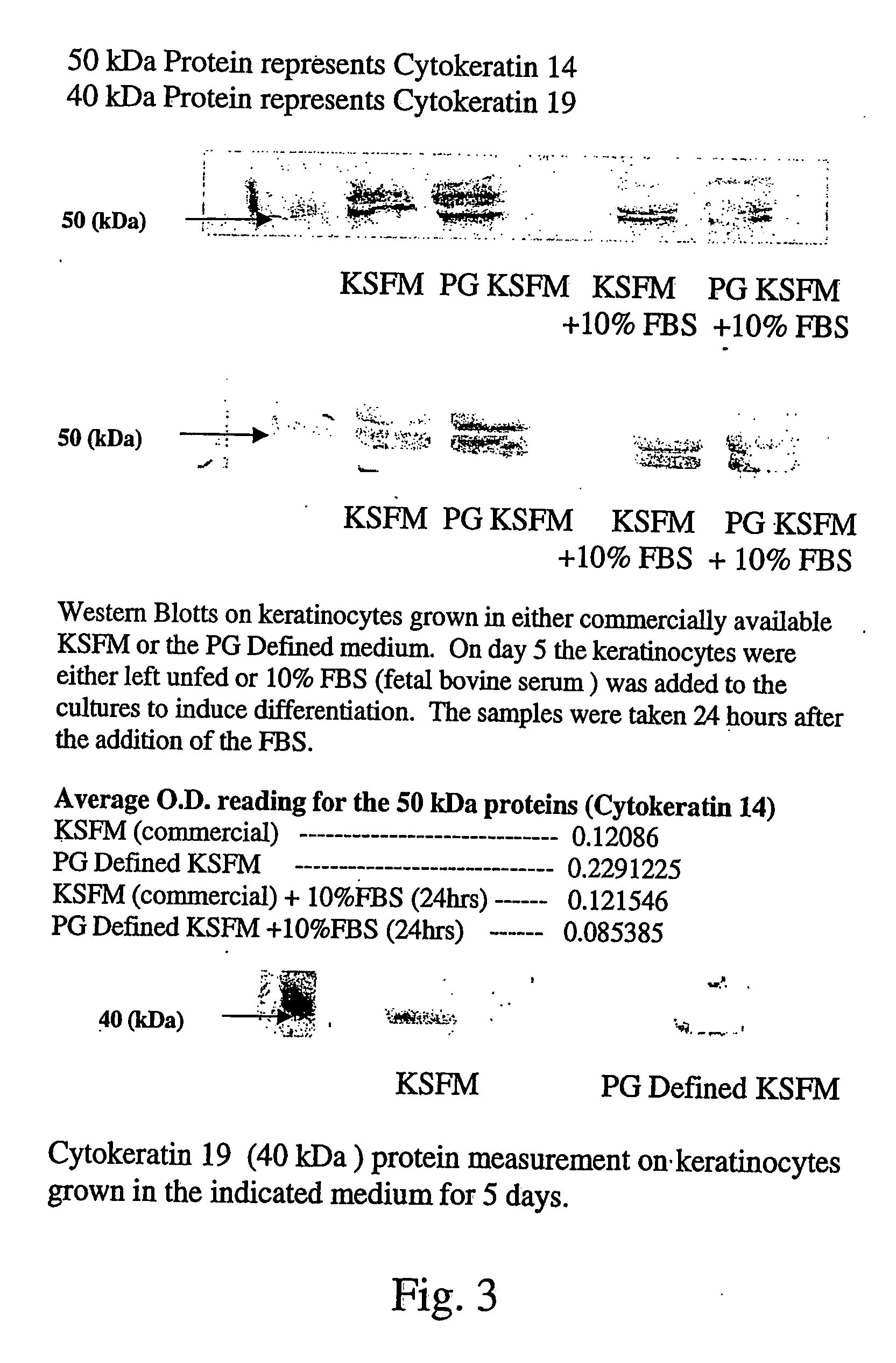Method for culturing and expansion of mammalian undifferentiated epidermal kerainocytes exhibiting stem cell characteristics
a technology of stem cell characteristics and kerainocytes, which is applied in the field of culturing of mammalian e, can solve the problems of inability to achieve the maintenance of a substantial undifferentiated state with the intent of adding to a wound site, inability to obtain reliable supply, and inability to co-culturing the human dermal fibroblasts and human epidermal keratinocytes. to achieve the effect of increasing the quantity of hla
- Summary
- Abstract
- Description
- Claims
- Application Information
AI Technical Summary
Benefits of technology
Problems solved by technology
Method used
Image
Examples
example 1
[0064] Experiments adding various amounts of FGF7 / KGF to the basal GIBCO® KSFM catalogue no. 17005-042, were completed to indicate the optimal concentration of KGF addition to the basal medium. The amounts added were 10, 5, 2.5 and 1 ng / ml of medium. After an 8 day period, the 10 ng / ml addition provided superior growth of the stem cell-like keratinocytes. The 5 ng / ml version showed good cell viability, but slower stem cell-like keratinocyte growth. The lower concentrations showed inadequate stem cell-like keratinocyte growth. We did not go above 10 ng / ml, because of the high cost of the compound. However, at this point, the graph is levelling off in any case.
[0065]FIG. 2 is a graph illustrating the comparison of cultures grown in commercially available KSFM ie GIBCO® KSFM, supplemented with growth promoting additives including EGF and BPE, and cultures grown in the novel PG Defined KSFM according to the invention, including 10 ng / ml of medium of FGF7 / KGF. The growth curve shows tha...
example 2
[0068] Allogenic stem keratinocytes have been isolated utilizing a small number of cells, using methods described by Jones et al. 19952, the disclosure of which is incorporated herein by reference. After isolation of a small number of the stem keratinocytes, the cells are grown in the PG Defined KSFM including 10 ng / ml of medium of FGF7 / KGF, into a homogeneous culture of keratinocytes with stem cell-like characteristics, therefore reducing the risk of immunogenicity. 90+% of the viable cells were found to exhibit keratin 5-14 expression pattern of keratinocytes progenitors.
[0069] Autologous keratinocytes were expanded in the novel PG Defined KSFM on either a commercially constructed imatrix or in a culture, giving a population of keratinocytes with stem cell like characteristics and then transferred to the wound site using a variety of methods of application.
[0070] This method, using the novel medium (PG Defined KSFM) amplifies small numbers of either allogenic or autologous kerat...
example 3
[0072] Experimental results obtained by (Jones and Watts4), the disclosure of which is incorporated herein by reference, indicate that the total number of stem keratinocytes in a primary epidermal cell population is approximately 20%. Their method for the isolation of stem keratinocytes is a timed adherence of the cells to a 10% collagen coating using 5 minutes as a maximum adherence time. When adhesion tests were performed on keratinocytes grown in the GIBCO KSFM+EGF+Pituitary Extract, only 2-5% of the keratinocytes complied whereas 60-65% of the keratinocytes appeared on the same collagen base after 5 minutes when grown in PG Defined KSFM, including 10 ng / ml of FGF7 / KGF.
[0073] When keratinocytes were grown in the commercially available GIBCO® KSFM+supplements (Epidermal Growth Factor and Pituitary Extract) and then transferred after sub-culturing to either their original growth medium GIBCO KSFM+supplements or PG Defined KSFM including 10 ng / ml of FGF7 / KGF, the results were as fo...
PUM
 Login to View More
Login to View More Abstract
Description
Claims
Application Information
 Login to View More
Login to View More - R&D
- Intellectual Property
- Life Sciences
- Materials
- Tech Scout
- Unparalleled Data Quality
- Higher Quality Content
- 60% Fewer Hallucinations
Browse by: Latest US Patents, China's latest patents, Technical Efficacy Thesaurus, Application Domain, Technology Topic, Popular Technical Reports.
© 2025 PatSnap. All rights reserved.Legal|Privacy policy|Modern Slavery Act Transparency Statement|Sitemap|About US| Contact US: help@patsnap.com



